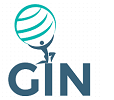Medical devices and IVD medical devices have come in handy for saving the lives of the people with the help of state-of-the-art healthcare solutions for the finding out, treating, monitoring, predicting, or reducing the ill effects of a disease.
Difference Between Medical Device and IVD medical Device
If we are to talk about the major difference between a medical device and an IVD medical device is that the latter are tests put to use on biological samples like, tissues, urine or blood to regulate the status of the health of a person.
IVD medical devices do not come in contact with a person. These fulfil their role based on info that is offered by them and not on their action on the patient. Although IVD devices do not bring about direct harm, they might pose risks if their usage brings about wrong diagnoses and puts people at increased risk of making irreversible medical decisions based on imprecise test results.
So, it is significant that IVD medical devices prove safety and efficiency through diagnostic and clinical validation.
To be precise, the IVD medical device is any medical device which is a reagent, instrument, apparatus, equipment, software or system, whether it is used alone or in combination with some other device, to be used for the inspection of specimens, as well as blood and tissue donations, derived from the human body.
There are more than 40,000 different IVD products available offering info to both patients and doctors regarding various medical conditions. These include tests for pregnancy, which are done on your own and tests for diabetics, to sophisticated diagnoses done in labs.
There are also some of the other IVD devices like HIV tests, human genetic testing devices, those used for blood grouping, or COVID tests.
IVD Medical Devices Make an Integral Part of Modern Healthcare
IVDs have become an integral part of modern healthcare since there are a lot of decisions, which are influenced by the results of the tests, done with the help of these devices.
With allowing earlier and targeted treatments, IVDs reduce the duration of hospital stays for the people and also side-effects, which result in much improved health condition of the people, reduced costs of healthcare.
Coming to a Concrete Conclusion
In conclusion, it can be said that IVD medical devices guide users to the right healthcare professional and can reduce the time taken to get the final diagnosis, which is every so often related with expensive diagnostic procedures. So, doctors can make faster and precise diagnostic decisions and consequently advance the path of the treatment of the patient and decrease the cost incurred in treatment.
There are increasing cases of blood disorders all over the world, and for the diagnosis of the same, there is a need for IVD tests to be performed. Due to this, the demand for IVD tests will continue to increase in the future also, and will reach a value of USD 127.4 billion, in another seven years from now.





-Market2.jpg)




-Market.jpg)





-Physiotherapy-Tapes-&-Bandages-Market.jpg)


